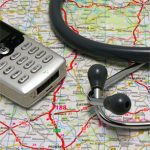With respect to the user-perceived experience, more than 12,000 people who had used this tool were surveyed in a study. Of these individuals, 78% found the tool useful, 76% felt the questionnaire allowed them to describe their complaints well and 74% would recommend the tool to friends and other patients.4
Dr. Grainger noted that such results for symptom checkers are encouraging. However, a key question that must be explored is: “How accurate are these tools?”
In a 2022 systematic review, Wallace et al. evaluated the accuracy of symptom checkers in yielding a diagnosis and appropriately guiding patient triage. They identified 10 studies that looked at a range of conditions, including inflammatory arthritis, ophthalmologic diseases and HIV. (Note: 50% of these studies recruited real patients, and the remainder used simulated cases). Among the tools studied, primary diagnostic accuracy (i.e., listing the correct diagnosis first) ranged from 19–38%, top three diagnostic accuracy (i.e., listing the correct diagnosis first, second or third) was 33–58% and overall triage accuracy (i.e., providing the correct triage advice) was 49–90%.5
In Dr. Grainger’s view, this study implies that symptom checkers show promise, but are not yet completely ready for primetime.
With a plethora of potential technological interventions, rheumatologists must not neglect the elements of medicine that have always been important in caring for patients, such as attentive listening, empathy & the nuances of the physical examination.
Virtual Care
Dr. Grainger next discussed telehealth, which can take the form of telemedicine visits conducted by video and/or phone, remote monitoring of patients and online platforms designed to provide patient education and self-support tools.
Before the COVID-19 pandemic, telemedicine was in use, but this use was mostly via asynchronous means (i.e., sending an electronic message to a patient or calling them on the phone could be called telemedicine). Synchronous use was very limited and used primarily in rural and remote areas often with the purpose of extending the workforce—such as in Alaska.6
Dr. Grainger noted that telemedicine has several potential advantages, including improved access, decreased time and travel costs for patients, the ability to expand regional and remote care, and the reduction in infectious exposures for patients. At the same time, telemedicine has certain limitations, including potentially lower reimbursement, technological problems (i.e., hardware and software issues, access to Wi-Fi, ease of use and adoption among patients, etc.) and the inability to perform a full physical exam.


